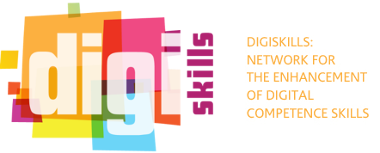Social Media Toolkit for Education

| Rate | |||
| Criteria Evaluation | |||
transferable adaptability innovative acceptability impact effectiveness availability creativity collaborative
EL
ES
HR
DE
FR
HU
PL
View the translated version |
|
The good teaching practice at a glance
applied
Teacher
Any
How it works
1. Analyzing Teaching Process
- What are your teaching goals?
- What content do you intend to use?
- What instructional methods do you plan to use?
- How will the students’ work be assessed?
2. Identifying Appropriate Social Media Types
3. Applying the Guidelines
To help us build up an evidence-based library about the use of social media in teaching, and to help other colleagues in the sector, we would kindly ask you to provide us with feedback about the impact of these activities on your students’ learning.
Very easy
Detailed description
You will be able to choose the right social media tool for your practice; You will be able to apply the fitting social media tool in your teaching
1-2 hours
This toolkit was born out of the question of: To what extent is and can social media be used for teaching, learning and research?
The Toolkit is an outcome of the Somecat project. It is a joint project between the Center for Innovative Teaching and Learning, School of Management and Law, Zurich University of Applied Sciences (Coordinator); the Political Science Department of Perm State University (Russia); the Department of Informatics at Ankara University (Turkey) and the nexus Institute for Cooperation Management and Interdisciplinary Research (Germany).
You will be guided through the entire toolkit online.
Not sure which type of social media is right for your class?
No problem, just answer four quick questions about the way you teach and what you want your students to learn. Based on your answers, we can tell you which of the six types of social media is best for you.
This tool is prepared to be a guide for you, pointing out the best and most efficient social media for your course or in other education processes. For this purpose we have classified the social media under six headings, which are most appropriate for educational purposes. Please click Classification Table to see the different classifications.
First, we will ask you four questions related to the nature of your course and your teaching habits, namely your preferences about the taxonomy of learning, educational content, instructional methods and assessment. Based on the results we will pattern-match based on well-known and trusted instructional theories, taxonomies and approaches. In the case of multi probability among the choices, we will also ask another question about your preferences to clarify your priorities. After that, we will present you with the most effective social media to be used along within your course or training programme.
At the end of the toolkit, you will be directed to Instructional Tips that contain a detailed explanation about the social media suggested to you. Our suggestions will be as realistic as possible, based on the number of questions you answer, and the amount of detailed given.
| Country of origin | Switzerland |
| Language of the practice | English |
| Website related | http://socialmediaforeducation.org/en_gb/ |
| Status of the practice | |
| Download full practice desciprion |
- ICT enabled learning - Using digital resources for face-to-face classroom practice & for online learning/blended classroom practice
- Community Building - Using digital resources to connect learners/build communities
- Quality and Assessment - Using digital resources to better assess learning
About the author
| Name of contributor | Christian Rapp |
| Affiliation of contributor | Researcher, Project coordinator |
| Institution where this practice was implemented | Zurich University of Applied Sciences, Center for Innovative Teaching and Learning (Coordinator of SoMeCat project), CH |
| Contact e-mail | rapp@zhaw.ch |
- Log in to post comments


